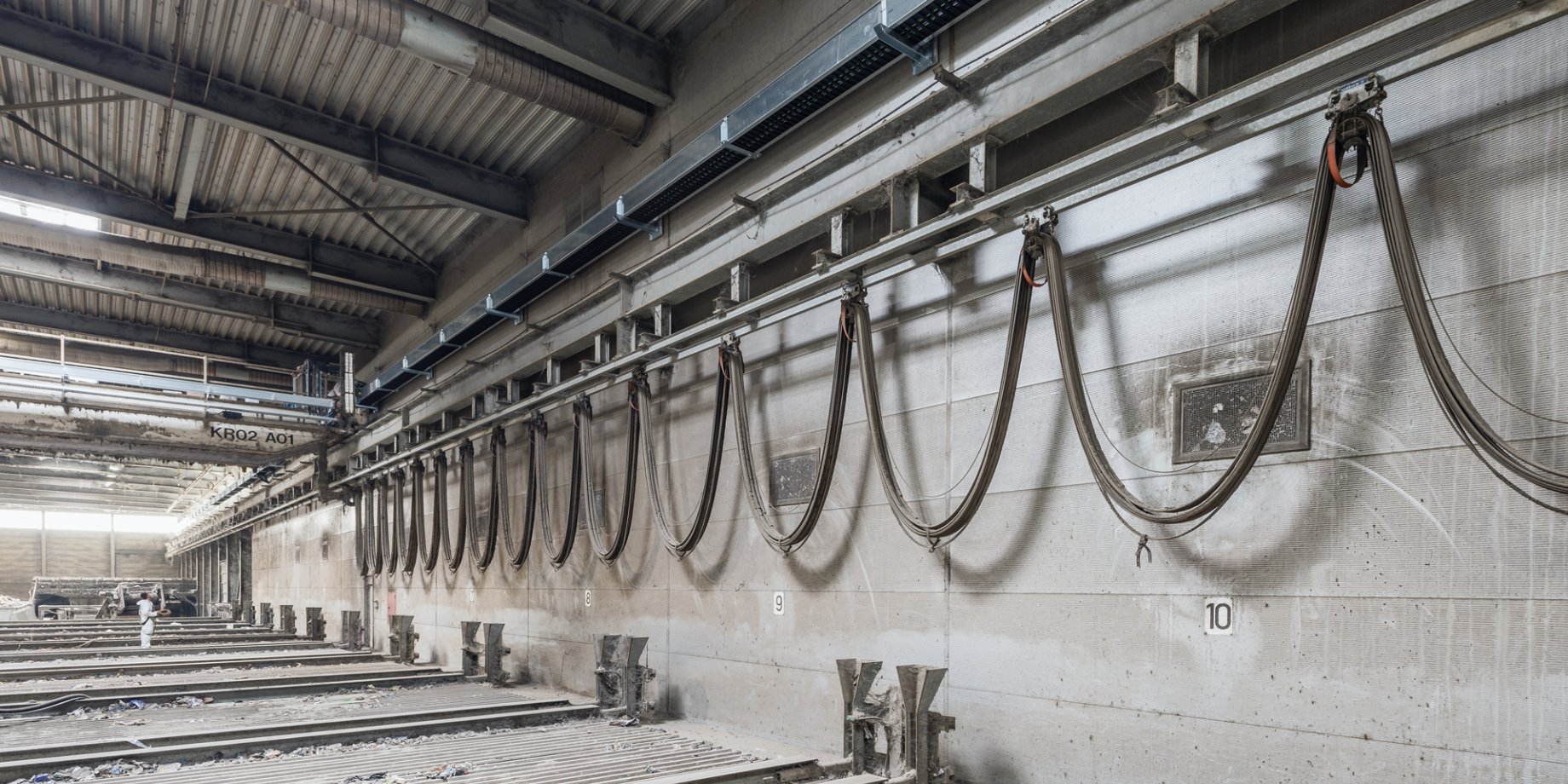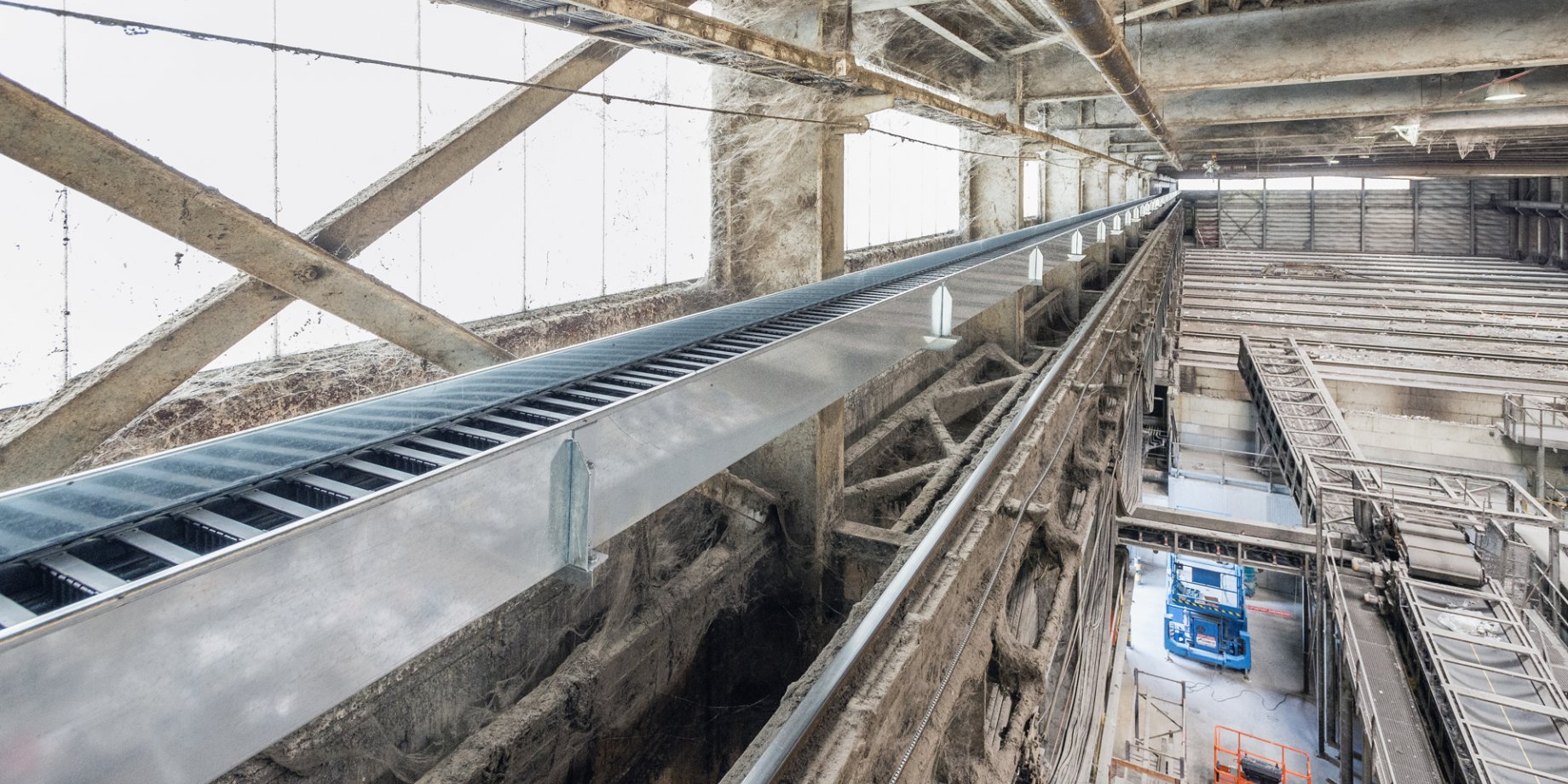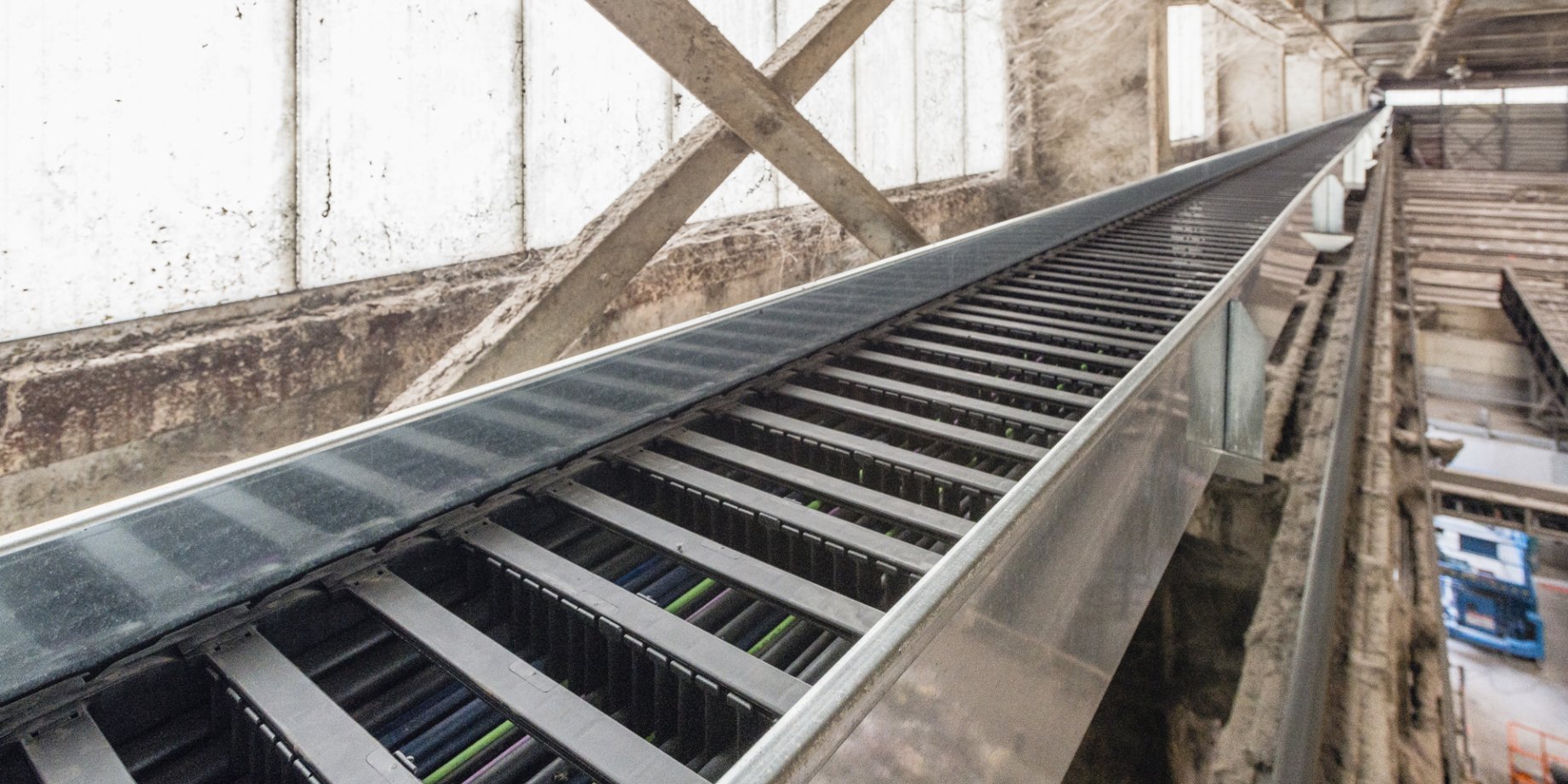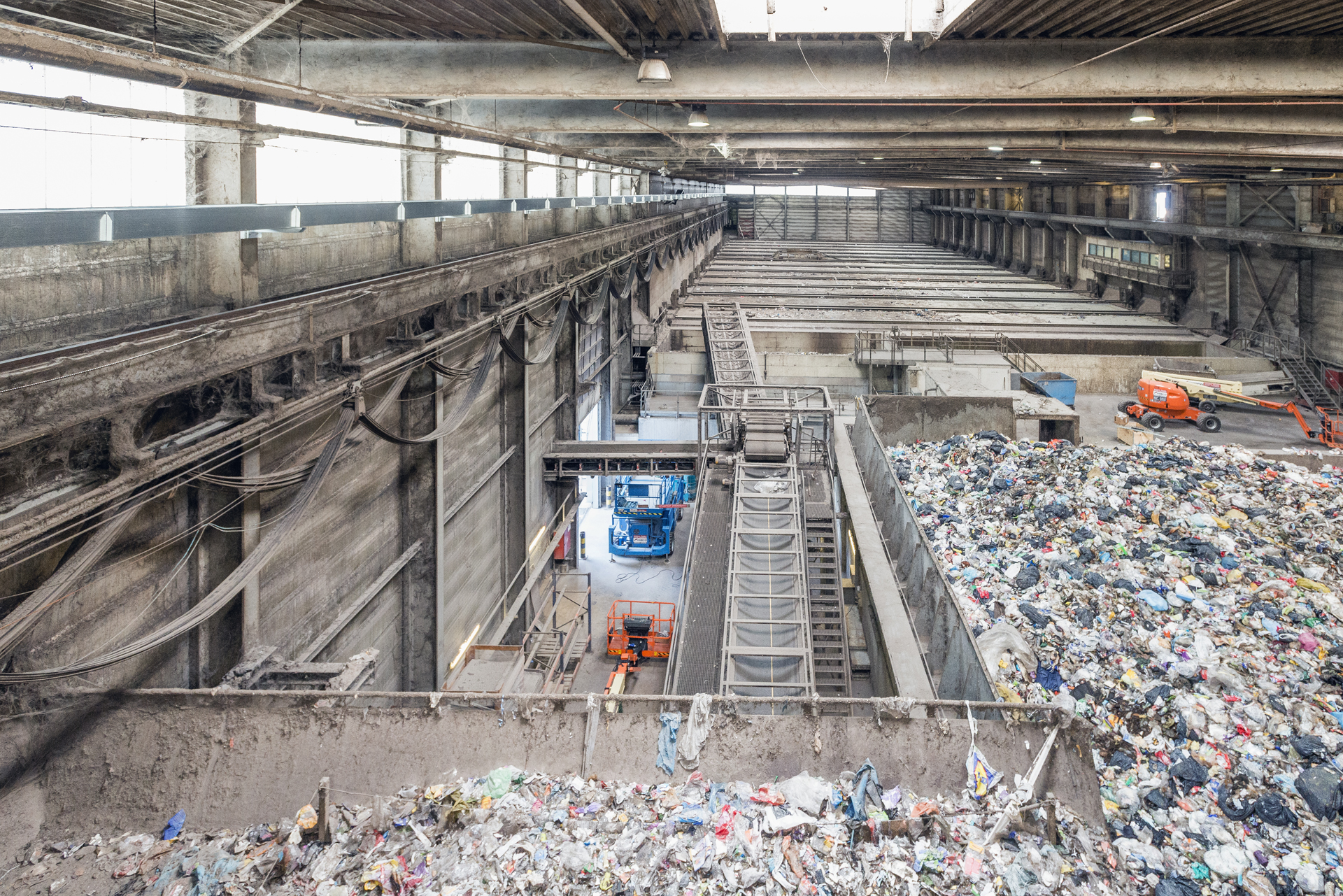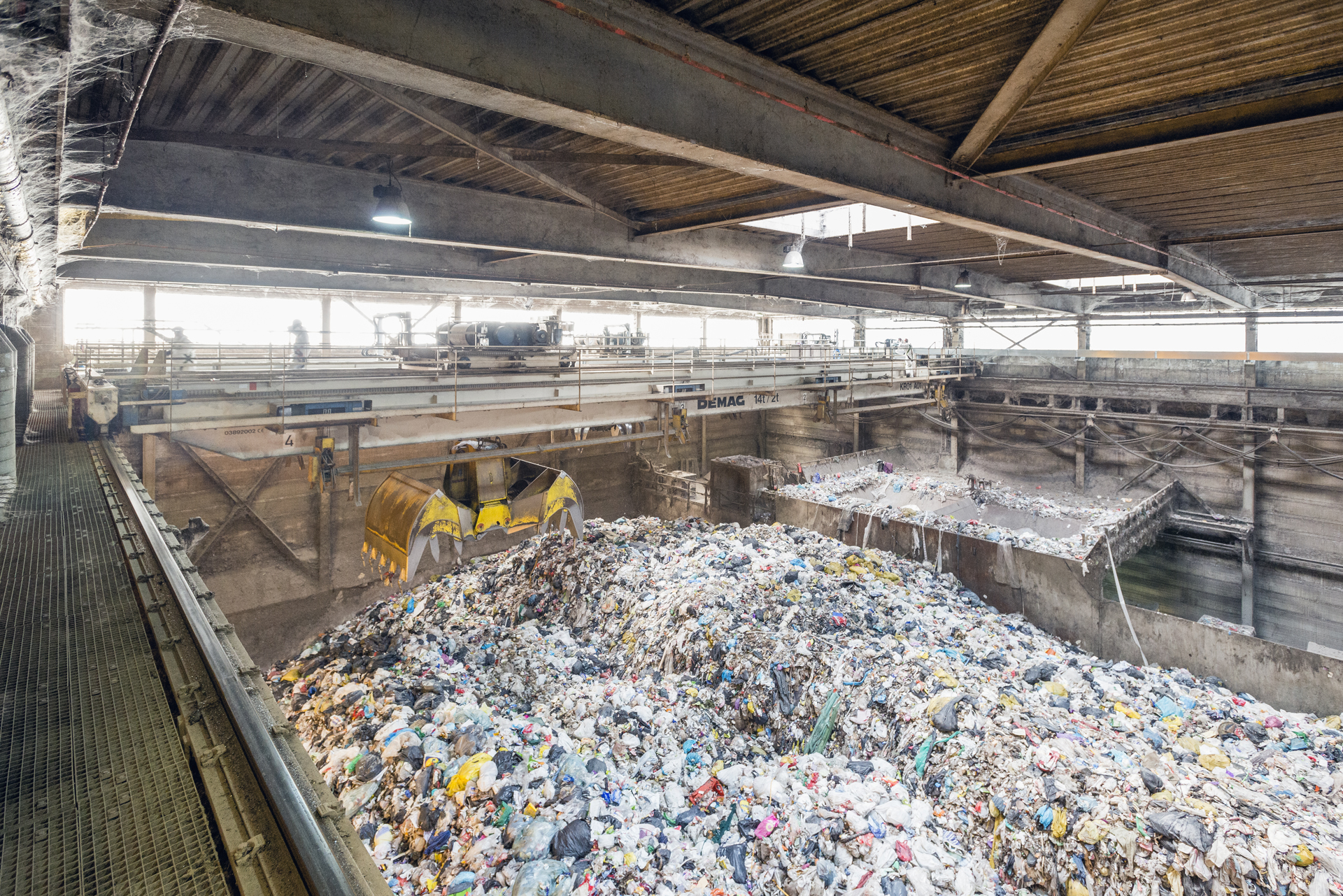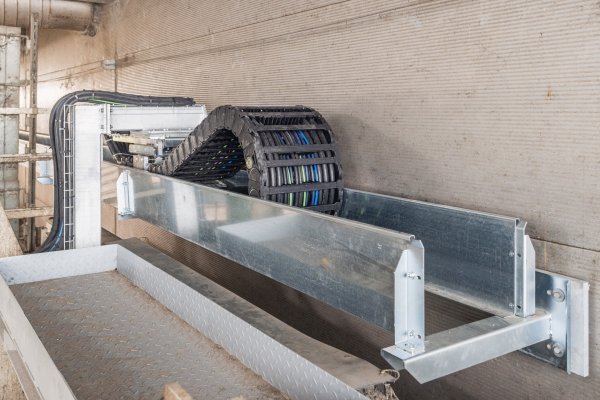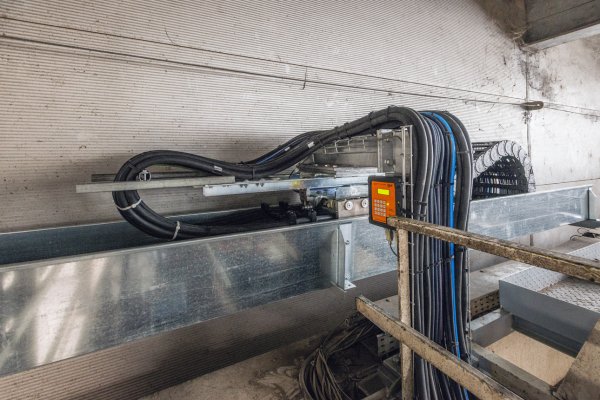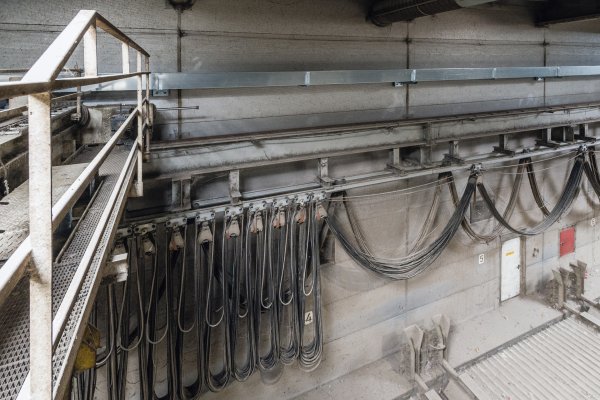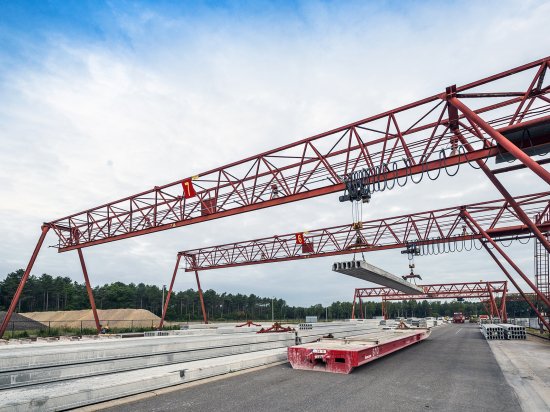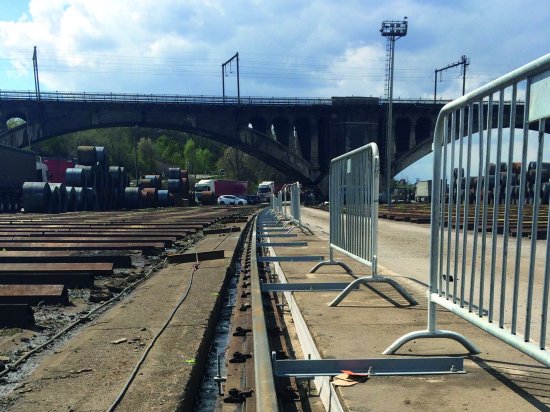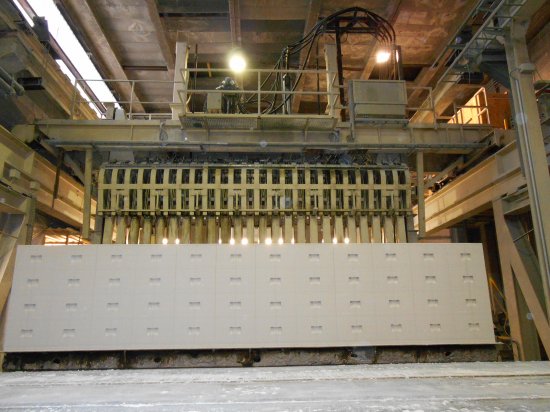At the waste-processing facility (see ‘Mechanical Biological Separation’), municipal solid waste is handled by two overhead cranes equipped with scrap grippers. The cranes were installed in 2004 and equipped with a festoon cable system for the power supply, which needed to be quite bulky given the 116-metre travelling stroke of the cranes. “Unfortunately we ran into problems with it after just a few years,” says Geert Van den Broeck. “The festoon cables and trolleys suffered frequent damage in the heavy operating conditions, especially with the high speed of 2.5 m/s and frequent and abrupt accelerations and decelerations. This very often resulted in cracking to the cables and trolleys colliding at high speed, so we regularly needed to install spare cables and trolleys, leading to unplanned production downtimes.”
Putting an end to uncertainty
Subsequent improvement projects did not solve the problem. “I remember that in 2010 we replaced the entire system, using alternative components and an improved detailed design,” explains Van den Broeck. “But the problem reappeared in 2012 and increasingly risked jeopardising our service. Don’t forget that our waste treatment process should rigorously keep up with the flow of waste, otherwise we’re in the headlines! Eventually we opted to circulate a Request for Proposal to crane suppliers to put an end to the uncertainty.”
